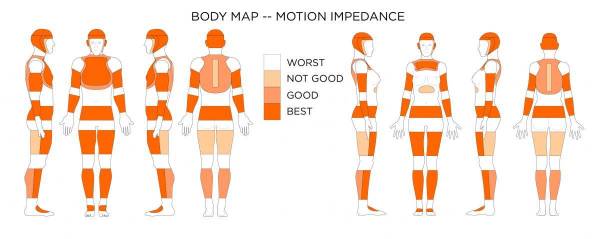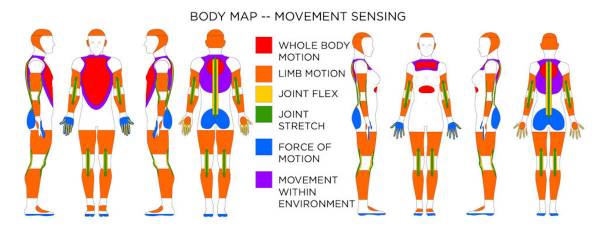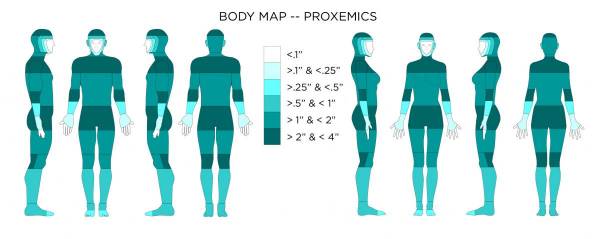Wearable technology is all the rage these days. From smart watches to heart rate monitoring T-shirts, to shoes with fitness trackers built in, sports garment manufacturers are always trying to find new and creative ways to marry style and comfort with technology.
Wearable technology is all the rage these days. From smart watches to heart rate monitoring T-shirts, to shoes with fitness trackers built in, sports garment manufacturers are always trying to find new and creative ways to marry style and comfort with technology.
One scientist took a closer look at wearable tech from a unique angle: where to wear the tech, rather than what sort of tech to wear. His research examined the practicality, comfort, and of use of wearable tech based on a few factors:
Body movement and mechanics
The wearable devices shouldn’t hinder full range of movement and might be best when placed on parts of the body that don’t move (such as the chest, upper back, or waist).

Movement sensing
In direct contrast to the previous factor, this one is needed for the sensors (such as accelerometers) to function. If the wearables are placed on a body part that doesn’t move much, the sensor won’t be able to detect the full scope of movement and motion. Sensors placed on the lower back, arms, legs, hands, and head will prove most effective at detecting movement.

Type of sensor
A heart rate monitor needs to be located at the wrist, neck, or immediately above the heart. Blood glucose monitors are worn at the waist. Respiration monitors are usually placed over the chest cavity to monitor expansion. The placement of the sensor is usually determined by its purpose.
Proxemics
Proxemics is a human’s perception of self-size. The distance from the body portrayed on this body map indicates how far from the body a wearable device might extend and still be naturally considered part of the person’s self-size awareness. Items extending beyond this distance from the body might take a period of time for a person to adjust and account for the object within their personal self-size envelope.

Social Acceptability
It’s socially unacceptable to use touch-based interactions on regions of the body associated with body waste elimination or sexual activity unless the technology was intended to aid in these bodily functions.
The research is fascinating and provides a glimpse into the most effective ways to incorporate technology into modern clothing. The full range of body maps can be found on this Georgia Tech wearable technology page.
Reference:
1. Zeagler, Clint. 2017. “Where to Wear It : Functional, Technical ,and Social Considerations in On – Body Location for Wearable Technology 20 Years of Designing for Wearability.” In International Symposium on Wearable Computers. Maui, Hawaii. doi:10.1145/3123021.3123042.






